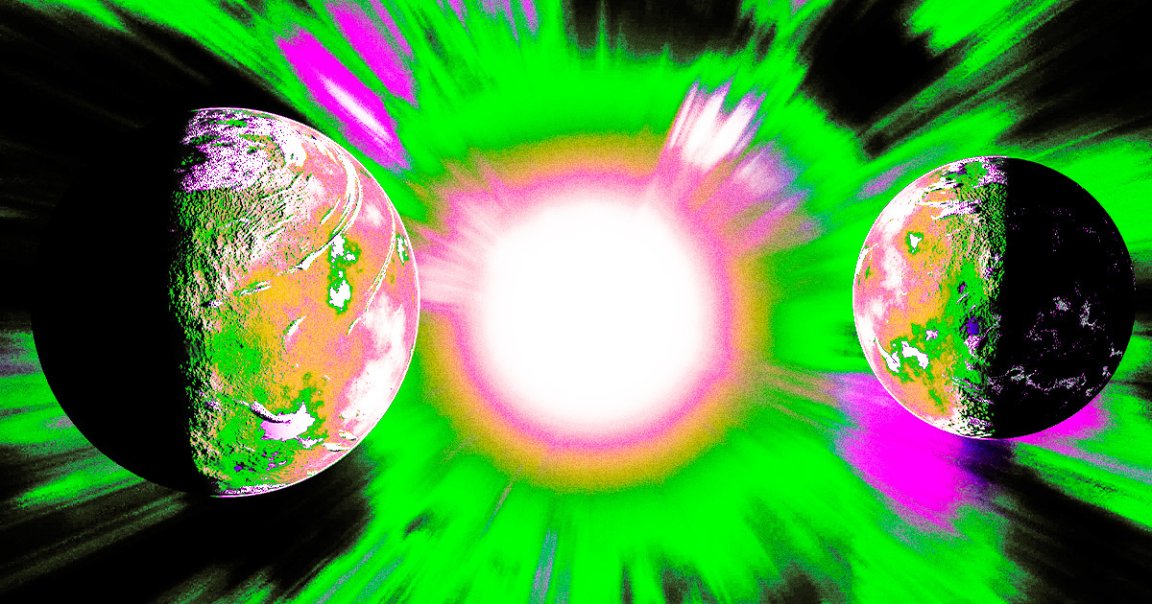
Making Waves
Finding an Earth-sized world with a magnetic field is the white whale of exoplanet hunting. But astronomers now think they’ve found a strong candidate, after detecting repeating radio signals from a rocky planet orbiting a star only 12 light years from Earth, according to a study published in the journal Nature Astronomy.
“I’m seeing this thing that no one has seen happen before,” said study co-author Jackie Villadsen, an assistant professor for physics and astronomy at Bucknell University, in a press release.
The detection of a magnetic field on the exoplanet, dubbed YZ Ceti b, means that it very well could harbor an atmosphere.
That’s a big deal, because scientists have long struggled to detect magnetic fields on smaller, terrestrial worlds like our own planet, which has remained one of the biggest obstacles in the search for potentially habitable, life-sustaining worlds.
Life, insofar as we know, needs a planet with an atmosphere to survive. But atmospheres themselves seem to need magnetic fields to shield them from the volatile emissions of the planet’s host star. Otherwise, they’d be stripped apart over time.
Up Close and Personal
Because detecting magnetic fields on small planets is so difficult, the researchers undertook a novel approach to level the playing field, wagering that their best bet would be to look at planets really close to their stars. And YZ Ceti b is indeed close, with a hasty orbit of only two Earth days that forces frequent interactions between its magnetic field and plasma from the Sun.
“If the planet has a magnetic field and it plows through enough star stuff, it will cause the star to emit bright radio waves,” Villadsen explained.
Then, by measuring the strength of the resulting radio waves, the scientists can gauge the strength of the exoplanet’s magnetic field.
“We’re actually seeing the aurora on the star — that’s what this radio emission is,” added lead author Sebastian Pineda, an astrophysicist at the University of Colorado. “There should also be aurora on the planet if it has its own atmosphere.”
Future Findings
The downside of this approach to hunting magnetic fields is that the planets detected would be too close to their stars to sustain life as we know it. On the other hand, it makes magnetic fields, and thereby atmospheres, far easier to detect, paving the way for new techniques for detecting habitable worlds in the future.
“The search for potentially habitable or life-bearing worlds in other solar systems depends in part on being able to determine if rocky, Earth-like exoplanets actually have magnetic fields,” said Joe Pesce, program director for the National Radio Astronomy Observatory, in the release. “This research shows not only that this particular rocky exoplanet likely has a magnetic field but provides a promising method to find more.”
More on space: Gamma Ray Burst Was So Bright It Blinded Almost All Equipment to Detect It